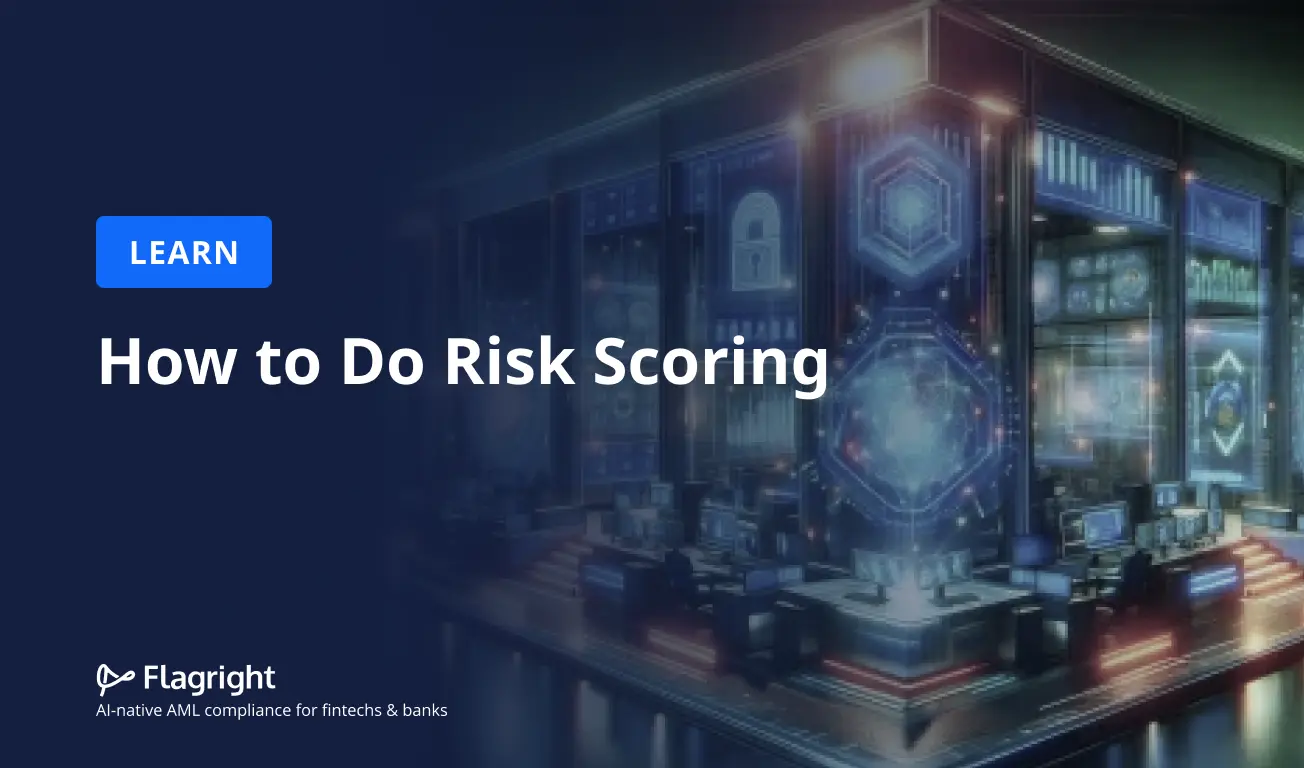Financial institutions deal with risks on a daily basis. Many types of risk could only be predicted or hypothesized in the past until they became more serious scenarios posing various risks to a business. Finance executives could also only speculate on the many dangers affecting an institution at any given time, and they couldn't adequately monitor, assess and score risk in real-time, resulting in potential consequences like money laundering, theft, and lawsuits.
To identify, evaluate, and mitigate risks that a financial institution faces, a successful financial risk-scoring procedure necessitates setting standards and protocols. Fraud risks, regulatory risks, and risks associated with market expectations, or government restrictions are all examples of these risks.
Fintech has become the core of financial innovation, delivering significant benefits for clients and investors but also generating a set of different risk scenarios.
Risk scoring and assessments enable financial institutions to navigate amid chaos and achieve their strategic goals. As a result, if they are to achieve long-term success, the process must be embedded into every phase of their digital transformation.
What is Risk Scoring?
Risk scoring is the process of calculating a numerical value that indicates the severity of a risk, based on a number of parameters. If there was no basic model for risk scoring, risk and security teams would find it hard to communicate internally on how to deploy resources correctly in order to reduce costs and impact on the business.
When it comes to risk scoring, there are two categories of data to consider: quantitative and qualitative. The difference between these two types is whether the data is numerical or not. Numerical data is quantitative, while qualitative data is more descriptive.
While that’s a straightforward overview, let’s take a summary of what they mean:
- Quantitative data are mostly concerned with assigning monetary values to risk components. Therefore, you'll be dealing with numbers. Quantitative risk scoring uses available data to arrive at a numerical value that can be used to quantify the likelihood of a risk event and the amount of money at stake.
- The total severity of a risk is determined using a more subjective assessment of risk occurrence likelihood (probability) against the potential severity of the risk consequence (impact) via qualitative analysis.
You should consider your assessment when constructing your grading scales. In one situation, a high-risk rating could indicate that a risk will occur within a month, while in another, it could indicate that the risk will occur within a year. The scales are adaptable and take into account a wide range of factors that influence risk scores.
The most difficult component of using qualitative data is usually defining scales.
Type of Risks
New risks are continually emerging as a result of the rapid pace of change and innovation.
Cross-border transactions are typically conducted at a high transactional speed, which is a valuable fintech tool.
The following are some of the risks that must be effectively managed:
- Fraud Risk
- Anti-money laundering and countering terrorist financing
- Merchant Risk
- Regulatory risk
- Consumer Risks
- Cybersecurity and Data Privacy
- Credit risk and operational risk
- Outsourcing Risk
When it comes to risk and compliance, the necessity of risk scoring and assessment must be the starting point for fintechs and neobanks.
With the emergence of new fintech firms, new risks and issues emerge, which must be managed effectively. Risks can manifest themselves in a variety of ways. Not only do financial institutions encounter obstacles as a result of the high pace of innovation, but so do regulators.
For financial institutions, more data means more risks
Given that financial institutions hold huge amounts of third-party data, most of which is personal and sensitive, it is more important than ever to score and assess risks and their impact on the current ecosystem in order to get the most out of their digital initiatives.
When data is involved, the risks are amplified. With the ubiquitous use of online banking apps and services, a breach is quite bound to occur at some point, and financial institutions must be prepared.
When an inevitable breach, audit, or royal commission (an investigation, independent of government, into a matter of great importance) happens, financial institutions will only survive the exposure if they can show that they have actually taken all reasonable steps to protect themselves.
The first step in minimizing these risks must be to gain control of high-risk data. The key to dealing with information risk is having complete control over the data. An institution will be unable to regulate or protect itself if it is unaware of what data it has, who is doing what with it, where, and how it is stored within its systems.
Furthermore, the risks do not stop with cybersecurity and ransomware attacks. Every technology-based decision a company makes is linked to the level of risk. For example, social media has become an integral aspect of marketing, yet it poses threats to brand reputation and data security. Customer profiling is also an important part of improving the customer experience, but it poses a risk to data privacy.
Therefore, the first step in risk assessment should be to understand and quantify the risk – not through sampling, guesswork, or ad hoc searches; but by compiling a complete and thorough inventory of all data and automatically marking its risk, value, and compliance responsibilities.
How to Do Risk Scoring
Risk scoring is part of the KYC (know your customer) pillar of an AML (anti-money laundering) framework. The purpose of any risk scoring system is for financial institutions to assess the risk that a customer (or potential customer) poses to their organization, both at the time of onboarding and throughout the client lifecycle.
Risk scoring is a step in the due diligence process that entails looking at a customer's background and behavior to determine their score.
The risk score is calculated using the following factors:
- Customer vetting: this is crucial to due diligence because it helps financial institutions regularly ensure that each customer's commercial transaction is legal within their jurisdiction. Regulations mandate that each financial institution's customer be subjected to ongoing screening against numerous watchlists.
- Demographic check: checking variables such as nationality, occupation, date of birth, length of stay with the financial institution, residence and mailing addresses, credit score, etc.
- Transactions: financial institutions should examine their customers' sources of income and determine whether they make sense in terms of their occupation or location. This involves determining whether transactions are appropriate in light of the customer's risk profile.
- Operational trends: financial institutions should review any fraud notices, suspicious activity reports (SARs), suspicious transaction reports (STRs), or other red flags relating to a customer's behavior.
A downward slope for financial institutions includes not avoiding errors such as failing to update current risks and thresholds and not being realistic about the rate of risk associated with a certain activity.
Risk assessments are, in many ways, reality checks. Therefore, when performing risk scoring and assessment activities, financial institutions must be upfront and transparent about the severity and likelihood of a given risk. Using a robust AML compliance solution can streamline this process and ensure risks are identified and addressed effectively.
In Conclusion
It's vital to remember that after the initial onboarding stage, a customer's risk score isn't set in stone. Instead, it's dynamic, as customers change throughout the course of their relationship with financial institutions.
A customer may be assigned a medium risk score upon onboarding, but if they engage in a sequence of risky activities, their score may rise to high risk over time. Because customer risk can shift rapidly, financial institutions should use systems that analyze and update scores on a regular basis.
Flagright is that system. Our dynamic consumer risk-scoring platform for fintechs, including digital banks and neobanks, monitors risk levels and customer behavior for every transaction in real time and puts the insights at your fingertips with minimal effort.
If you're a fintech or neobank in need of an automated user risk assessment process based on an API, reach out to us.
About the Author
Joseph Ibitola leads global demand generation at Flagright, an AI-native transaction monitoring and AML compliance platform. He drives marketing strategy, campaigns, and growth initiatives that help financial institutions adopt stronger compliance frameworks and reduce fraud risk. With expertise spanning fraud prevention, AML compliance, and financial risk management, Joseph also develops thought leadership and educational resources that position Flagright as a trusted partner to the finance industry.




.svg)





















